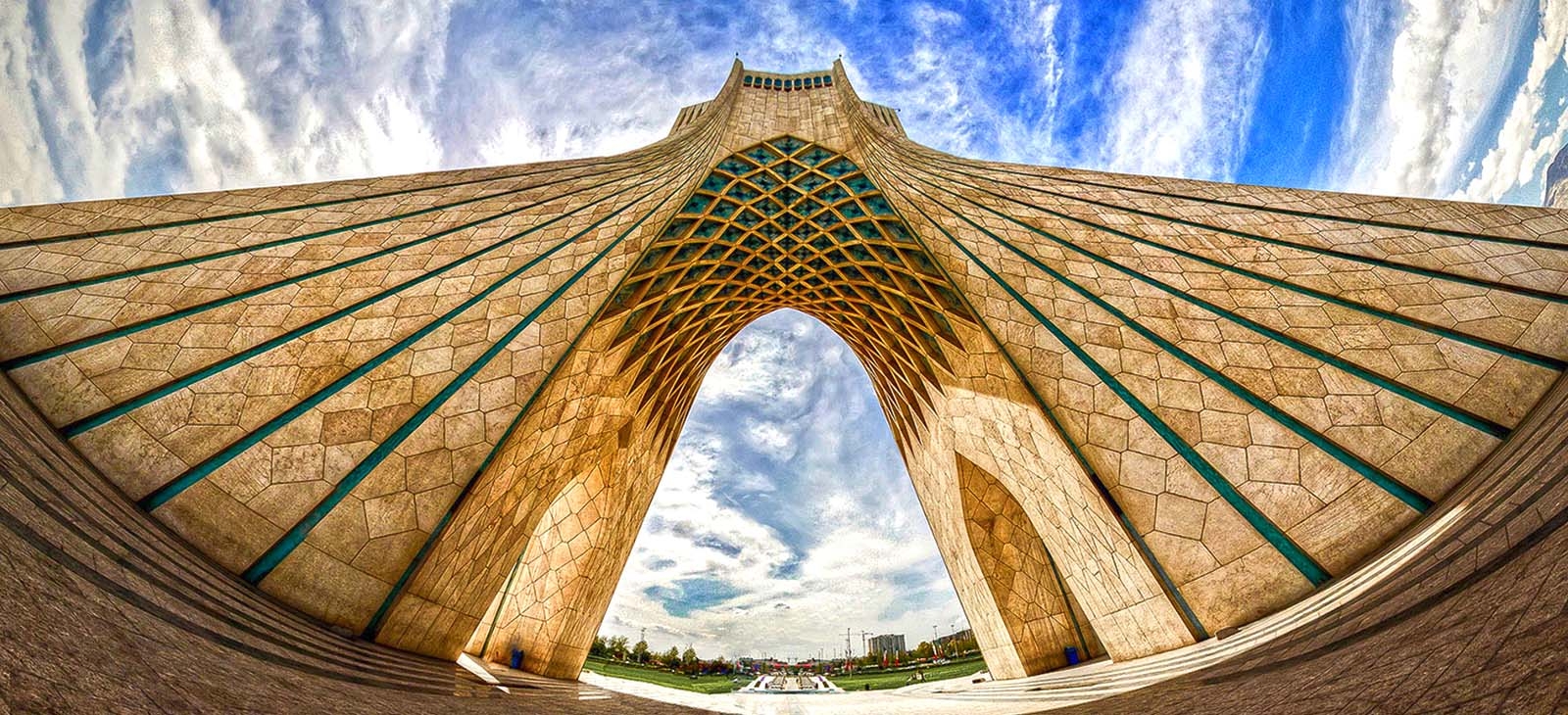The Azadi Tower (literally the "Freedom Tower" or "Liberty Tower"), formerly known as the Shahyad Tower meaning "King's Memorial Tower"), is a monument in Tehran City, the capital of Iran, marking the west entrance and one of the symbols of the city.
The Azadi Tower (literally the "Freedom Tower" or "Liberty Tower"), formerly known as the Shahyad Tower meaning "King's Memorial Tower"), is a monument in Tehran City, the capital of Iran, marking the west entrance and one of the symbols of the city.
Built in 1971 in commemoration of the 2,500th anniversary of the Persian Empire, this "gateway into Tehran" was named the "Shahyad" (King's Memorial) in honor of the Shah, but was changed to "Azadi" (Freedom) after the Revolution of 1979. It is 50 meters (164 ft) tall and completely clad in cut marble. This tower is part of the Azadi Cultural Complex located in Tehran's Azadi Square in an area of some 50,000 m². There are several fountains around the base of the Azadi tower and a museum underground. Built with white marble stone from the Isfahan Province, this tower includes eight thousand blocks of stone. The stones were all located and supplied by Ghanbar Rahimi, whose knowledge of the quarries was second to none and who was known as "Soltan e Sang e Iran" (Iran's Sultan of Stone). The shape of each block was calculated by computer, and programmed to include all the instructions for the building's work. The actual construction of the tower was carried out, and supervised by Iran's finest master stonemason, Ghaffar Davarpanah Varnosfaderani. The main financing was provided by a group of five hundred Iranian industrialists. The inauguration took place on October 16, 1971.
The architect, Hossein Amanat, won a competition to design the monument, which combines elements of the pre-Islamic architecture of Sassanid andAchaemenid eras, and Post-Islamic Iranian architecture.

